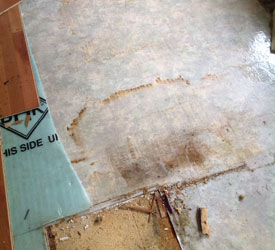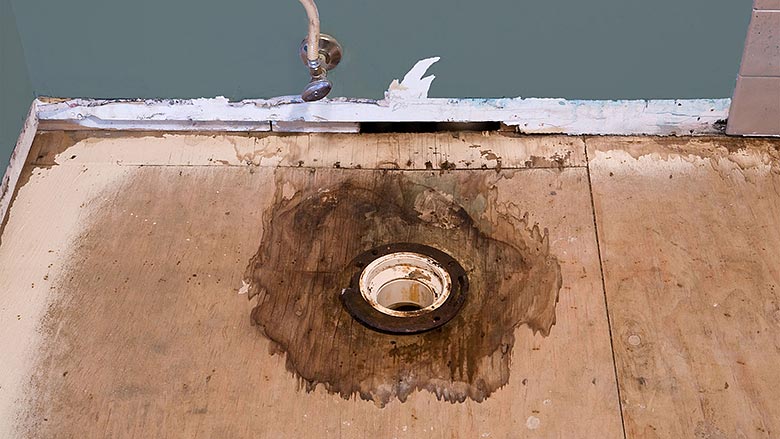What are your insights and beliefs about How to Fix a Water Damage Bathroom?

The shower room is extremely at risk for wet build-up and potential water damages because of the regular use of water in it. This write-up supplies basic evaluation strategies to aid discovering water damage hazards.
The constant use of water in the bathroom makes it exceptionally prone for wet build-up and possible water damages. By examining it consistently, you can decrease water related problems.
The complying with collection of assessments is easy to execute as well as should be done when in every three months in order to maintain your restroom healthy as well as to prevent prospective water problems triggered by the bathtub, the shower, pipeline joints and plumbing, sinks, cupboards, and the commode
Do not overlook executing these evaluations and also be comprehensive while executing them. Keep in mind that these basic examinations can save you a great deal of money by supplying very early indications for water damages
Sinks and Cabinets
Sinks and cupboards are revealed to moisture as well as moisture daily as well as are usually neglected. Check regularly under the sink and on the countertop over it. Fix any drip in the catch as it might suggest drainpipe troubles. Take a look around the sink, slow-moving draining pipes might indicate an obstructed drainpipe. Replace sink seals if they are split or loosened.
Bathtub as well as Shower
The shower and also bathtub need unique focus and maintenance. Examine the tiles and change if split. Ensure that there is no missing out on cement between the ceramic tiles. Inspect as well as change fractured caulking at joints where the walls satisfy the flooring or the bath tub. Clogged drains as well as pipelines troubles will certainly prevent the tub from drying out and also might indicate major issues under the bath tub. Speak with a professional immediately to avoid architectural damages. Take note of discolorations or soft locations around the bath tub walls as they may show an inner leak.
Plumbing
Signs for water damage are tough to find because many pipes are mounted inside the wall surfaces.
Pay special attention to flooring and also walls moisture and also stains as they may indicate an unnoticeable plumbing trouble. Inspect dampness degrees in adjacent spaces too.
The Toilet
The toilet is a prone water junction. Inspect the water lines and also look for leakages around the bathroom seat, in the tube, and also under the water storage tank. If you detect any kind of indications of moisture on the floor around the bathroom, check for leaks in the toilet rim and storage tank seals.
Realize that hanging commode bowl deodorants increases the possibilities for clogs.
TIPS TO PREVENT WATER DAMAGE IN THE BATHROOM
The average household uses approximately 80-100 gallons of water per person per day. For a family of 4, that's almost 2,500 gallons of water a week! The largest portion of this consumption comes from bathroom use. Flushing the toilet uses the most water, followed by taking a shower or bath. With that much water running through the home, water damage in the bathroom is bound to happen. Knowing how to spot signs of a water leak is essential to preventing long-term damage. This guide provides you with tips to reduce the impact of water damage on your bathroom.
CAUSES OF BATHROOM WATER DAMAGE
Pipe breaks are the most common cause of water damage we see in our daily jobs. The age of a pipe plays a large role in a pipe break as well as corrosion. Over time, the metal begins to break down, allowing water to escape. Frozen pipe breaks are also a concern in the winter months. Toilet overflows caused by paper products or children flushing inappropriate items. Degraded caulking around the toilet or bathtub can allow water seepage, sometimes behind the fixture, into the subfloor or walls. Condensation forms when the water in a pipe is cooler than the air temperature. Beads of water form on the exterior of the pipes, sometimes so much so that the water begins to drip and pool below. Sink or shower backups created by poor drainage. HOW TO PREVENT WATER DAMAGE IN YOUR BATHROOM
Inspect your toilet supply line for worn or frayed hoses and replace them as needed. Winterize your plumbing to prevent a frozen pipe break. Use vent fans to prevent condensation that can lead to mold growth. Routinely check and replace degraded caulking around your toilet or bathtub. Increase the temperature in your toilet tank and insulate your pipes during the warm summer months to keep condensation from forming. Use child safety locks on the toilets. Flush only toilet paper. "Flushable" wet wipes are actually not good for your plumbing system. Additionally, feminine hygiene products should not be flushed. Prevent water from escaping the tub or shower. Make sure shower curtains are in good condition. Inspect shower doors and replace the seal strip if necessary. Wipe up any water that accumulates on the floor and use bath mats. Water left to sit can cause damage to the tiles and flooring. Refrain from using bath products containing heavy oils to avoid a clogged drain.

As an enthusiastic person who reads on Common Causes of Water Damage in a Bathroom, I thought sharing that excerpt was a good idea. In case you liked our blog posting if you please don't forget to share it. I love reading our article about Preventing Water Damage in the Bathroom.
Detail